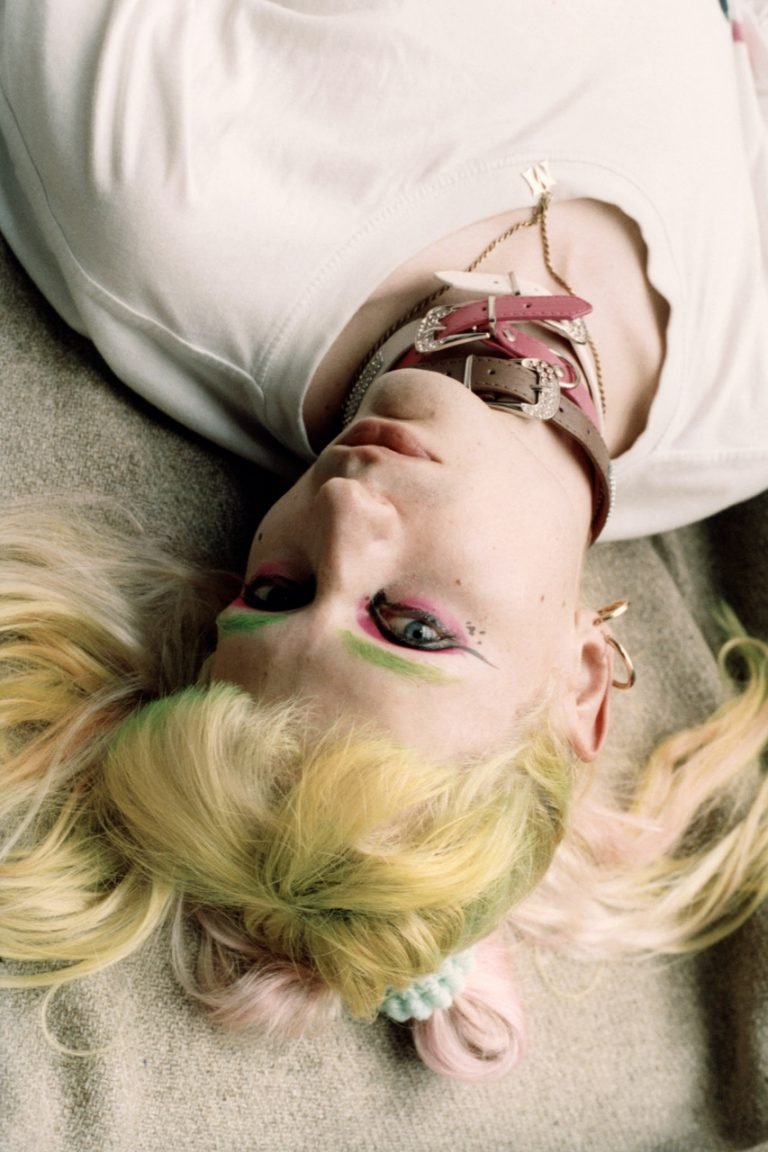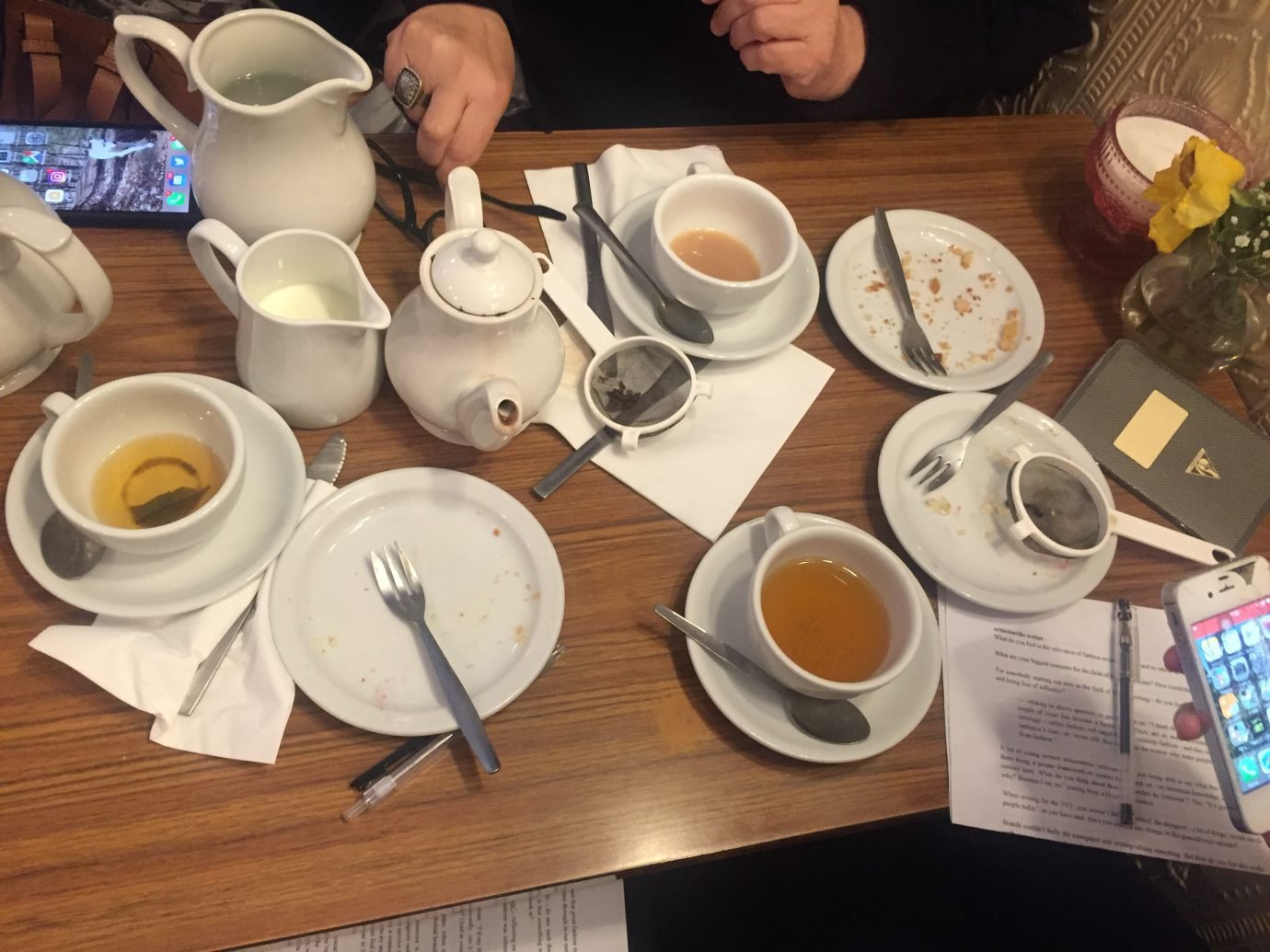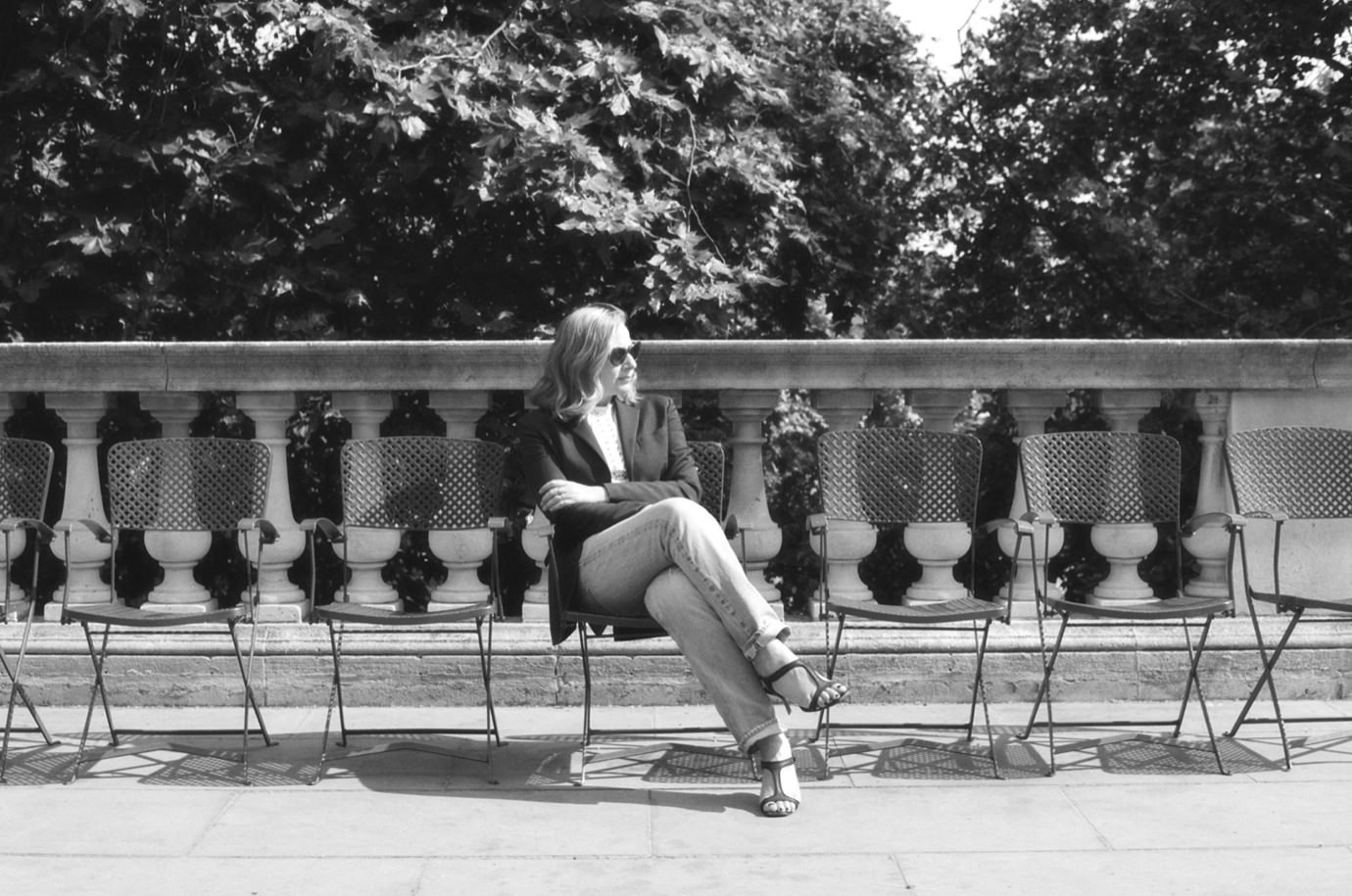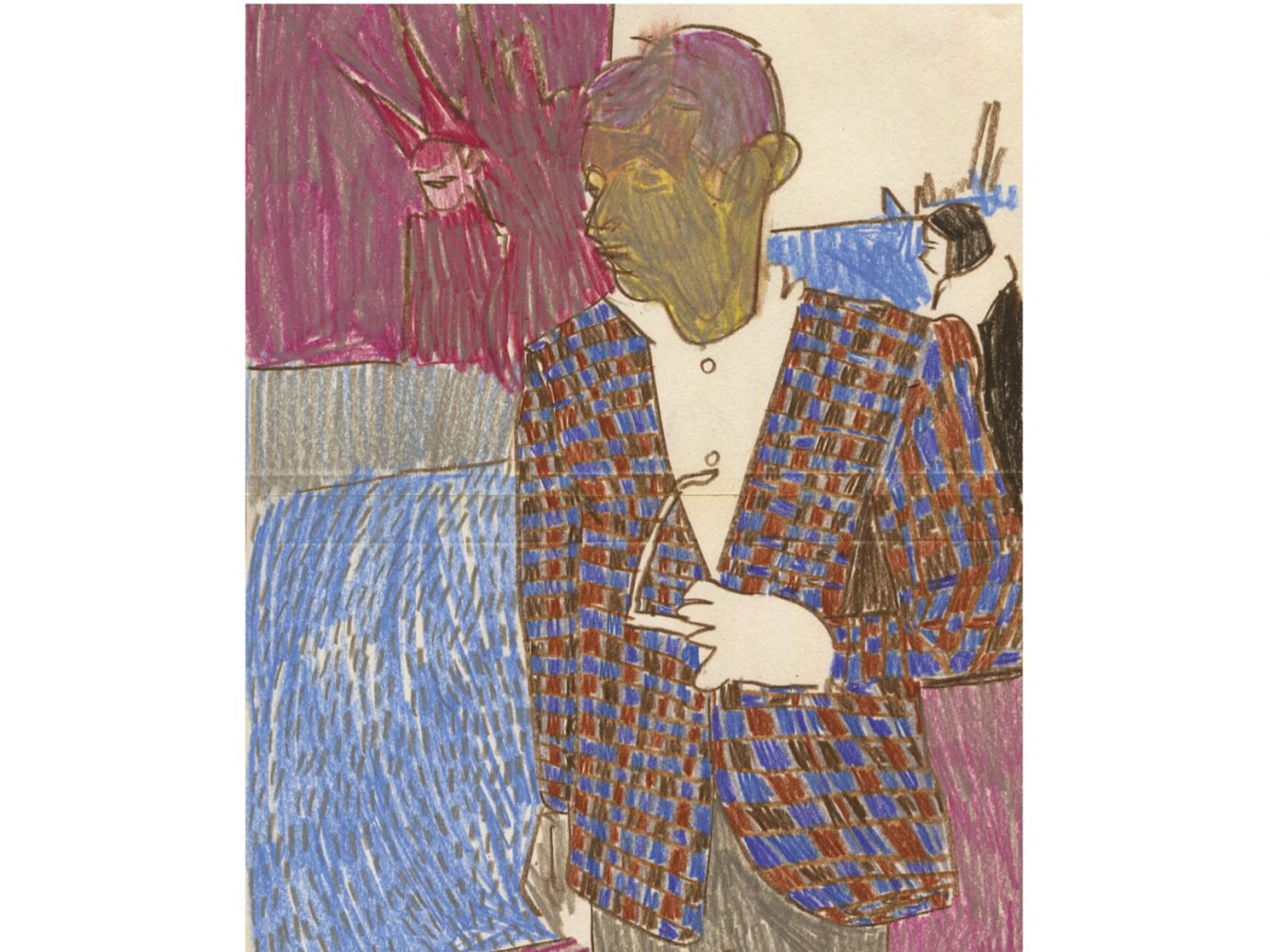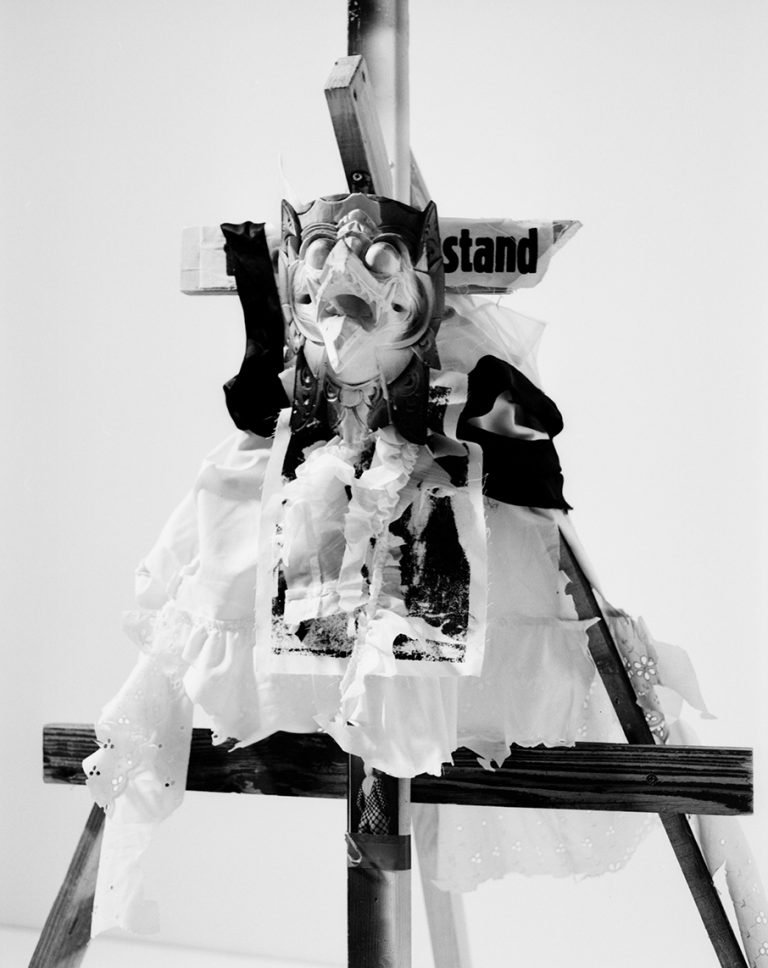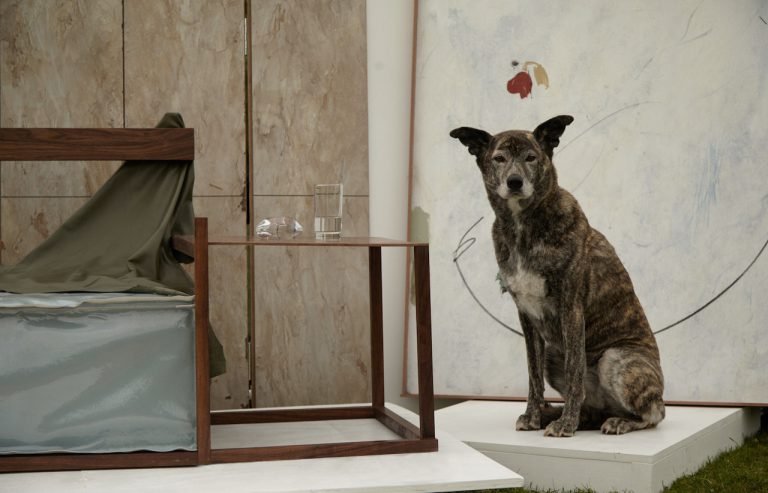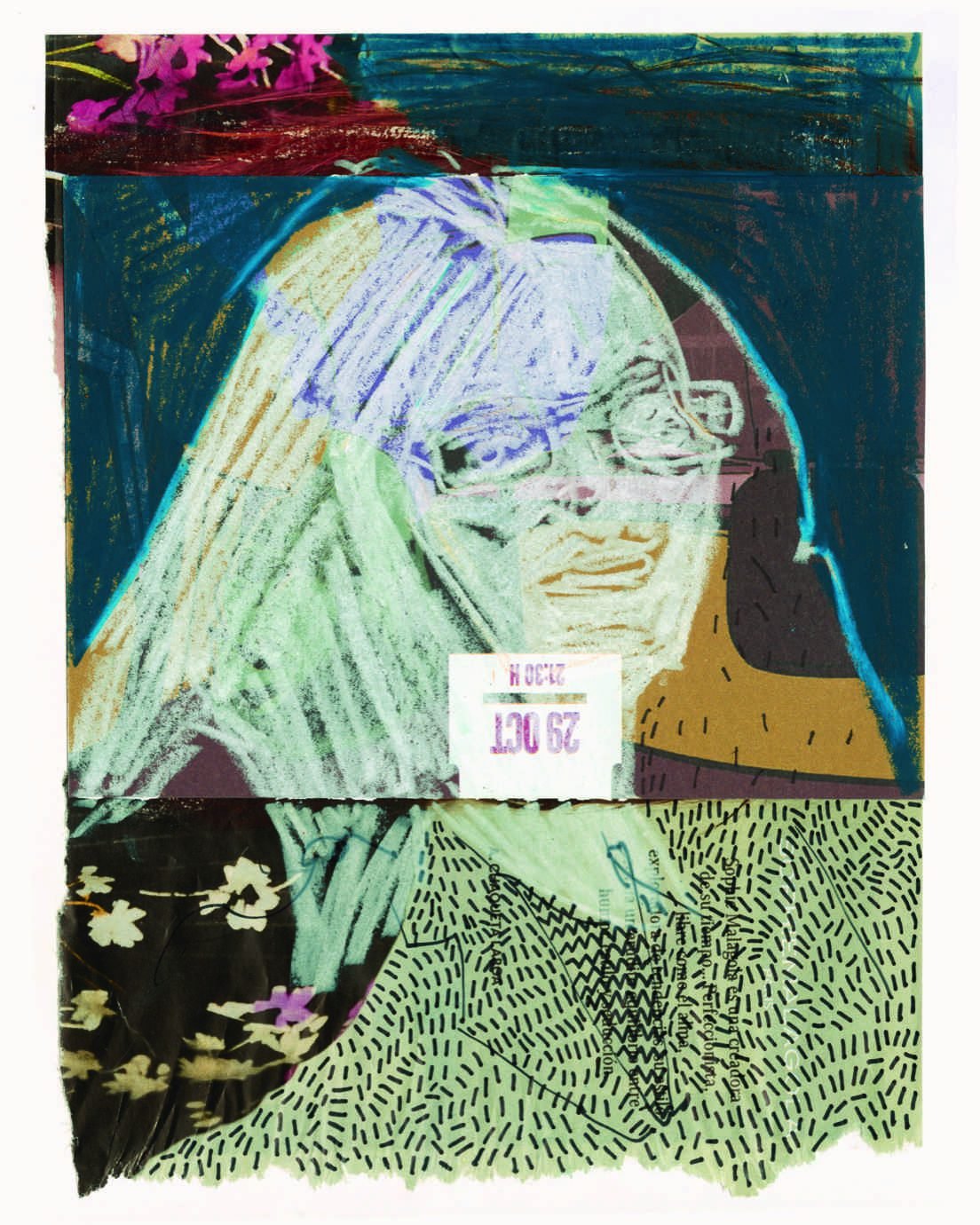Was this before or during the time of Vivienne Westwood?
I don’t think I knew much about Vivienne Westwood. As I said, I was slightly ignorant in terms of fashion, and was much more interested what was going on in terms of style: the New Romantic, the skinheads, the skas, the punks. I thought that was fascinating, because we had a very lame replica of that in France. The mods and all that stuff was my introduction to fashion, because in that time fashion was couture. Couture was really something. [Sighs] Very remote from me and anybody that I knew. It was something quite magical.
“FASHION HAS ALWAYS BEEN IN AWE OF CULTURE.”
How do you see couture now in lives of people?
The couture is completely… Back… It’s horrible to start every sentence with ‘back then’, but [laughs] back then there was still a local couture clientele. Women in Paris dressing in couture. Today, how many couture houses are there left in Paris? Five or something? Out of which probably two are actually not really French, but Italian. Nothing against them, but if you are talking purely French couture: Chanel, Dior and… I think Hedi at Saint Laurent had an attempt at couture, but I wouldn’t even be able to name the couture houses that are still active today in Paris.
I just wanted to get back to the point of where you were working at that time.
Yeah, it was a magazine called Femme, and then there was another called Décoration Internationale, but that was like ’83 or ’84.
How did it progress from there?
I think I assisted Peter Knapp for a couple of years and started to be an illustrator again. I was just wandering about. And then at some point I met, in New York, a very famous French photographer called Marc Hispard – this was in the late eighties. He was married to a lady called Brigitte Langevin who had started a magazine which was Glamour, but it was a very French, intellectual version of American Glamour. Very young and interesting. It was probably the first magazine in France that would mix a lot of contemporary culture with fashion, a bit of art, and all that feeling quite young and useful. It was a wonderfully interesting magazine to work at. It was to a certain extent the blueprint for a lot of other fashion magazines, certainly because we were completely disconnected from the usual women’s interest, kind of journalistic side of things. Nothing about cooking, nothing about how you keep your husband happy, and so on and so forth. It was actually quite feminist in a sense. It was just about entertainment, literature and fashion. The French have always been very interested in the whole psychology of things. There was a lot of that. It was no ‘women’s magazine’; a very important chunk of our readership must’ve been men.
It was a magazine where I also met Carine Roitfeld, who was working a lot with a young photographer called Mario Testino. They were starting to produce what eventually became their really influential body of work for the mid and late nineties. A lot of quite interesting photographers that weren’t yet huge, but who were getting there somehow. And even in the last years, a new fashion editor in chief was appointed – Babeth Djian. Even before Babeth I remember starting to work with Juergen Teller a lot. He wasn’t really interested in fashion back then, so we were doing a lot of portraits together, and then Craig McDean, who had just stopped being Nick Knight’s assistant; David Sims. Pretty much all of the photographers we were collaborating with were London-based.
Why do you think that it was specifically London? Because of the culture that was grown there?
Yeah, of course! You know, there was a great school of photography through Nick Knight. I think he singlehandedly turned out a whole generation of photographers. Ask around – every big name in English photography that is in their early fifties has at some point been Nick Knight’s assistant. Even Juergen Teller, for god’s sake, has been Nick Knight’s assistant for I think one afternoon. [Laughs] The English were cooler and more in touch with a lot of different things than the French were. It felt probably more exciting to work with English people than with French people, because we the French are very different from the English. We dislike ourselves so much that we wanna work with anybody but a Frenchman. [Laughs]
“JUERGEN TELLER IS ONE OF THE TRUE POETS IN FASHION PHOTOGRAPHY, IN THE SENSE THAT HE IS NOT TRYING TO BE POETIC, BUT WHAT COMES OUT OF HIS EYE OR HIS PICTURES IS ALWAYS INFINITELY POETIC.”
I did want to ask about your relationship with Juergen and how you started working together. What is it about that kind of abrasive flash photography that appeals to you?
Well, I don’t think I would describe Juergen’s flash photography as necessarily abrasive. Quite the opposite sometimes, actually. Because that flash would sort of give a certain glow to the skin and it’s not cruel or abrasive. That’s not what interests me necessarily, or that’s not the side of it that I think defines Juergen. Thank God it’s not only about that, because that could be copied. What cannot be copied is the nature of the experience that Juergen brings back from wherever he is, and wherever he photographs. That’s what makes Juergen Juergen, not the flash and the way it’s printed and all that, which is perfectly fine, quite beautiful and stylistically defined an era. What’s in the frame can be unsettling sometimes, but it’s not the actual surface of it that’s unsettling, necessarily. It’s more the subject or what it shows.
I think this whole flash thing, there are other photographers who built careers around that whole specific technical idiosyncrasy. Also back when we started working together, Juergen only shot black and white, printed on a very specific sort of sepia tone – that’s a completely different look. Sometimes no flash at all. But one of the interesting things about Juergen’s photography – an aspect which is very often overlooked – is the lasting quality of it all. There aren’t that many fashion photographers whose body of work you can look at twenty-odd years later, and that would still be relevant or valid. I can carry on talking about Juergen for hours.
Would you have a definition for him at all?
It’s maybe a very tired word, but he is one of the true poets in fashion photography, in the sense that he is not trying to be poetic, but what comes out of his eye or his pictures is always infinitely poetic. He’s got his sort of incredibly well-preserved childlike look on things, and they are always crystal clear and straightforward, and very very personal, without trying to be. It’s a very pure process. Voila.
Would you have a certain way to define yourself if you look at your own work over the years?
I think I’m fairly analytical. I am much more interested in other people’s work, so I tend to not look back that much on the stuff I’ve done. I would say ‘considered’, that’s my definition of what I do.
Are there any specific elements a project needs to have for you to consider working on it?
I suppose it needs to resonate somehow with what I am interested in. Something that I have respect for or that I would appreciate on some level of integrity. That could be a brand – there are brands that I really wouldn’t work for, because I don’t think that I would have a good understanding of what they’re doing. I am lucky enough to be able to pick my clients, basically, and I’ve tried over the years to work for the ones that I felt inspired by, because either I had an appreciation for what they were doing, or a keen interest or curiosity for who they were. I’ve worked with a lot of different fashion designers, and you know, you’re always intrigued and interested to meet the character behind the brand. You want to have conversations with them to try and understand what they’re about. You’re in the business of translating their vision into some kind of imagery, that’s what we do. Also, because you are going to be spending time on these projects – they’re sometimes quite time-consuming – you’d better be truly interested in the brand, otherwise it can be fairly trying. Voila. It takes as much time to do a bad job as to do a good job. Students should be very careful to select their clients, because good clients attract good clients, and bad clients attract bad ones.
Is it some kind of gut feeling for you as well?
It’s never a gut feeling. I don’t rely that much on my gut, I rely on my brain a lot more, but I guess sometimes I should rely on my gut. Again, as I said, my take on what I do is fairly analytical, so I kind of enjoy making sense of it all. That’s the only way I can see myself producing work in this field.
“NICK KNIGHT SINGLEHANDEDLY TURNED OUT A WHOLE GENERATION OF PHOTOGRAPHERS.”
What kind of conversations do you have when you start working with a designer? How much input they have, for example? I know you worked together with John Galliano at Dior.
When I was appointed as in-house creative director for Dior, my first intuition was to start working again with Nick Knight. Maybe because I thought that there was a really wonderful connection between John and Nick. I know John had an enormous respect for Nick and vice versa. That’s always an important factor. At least that side of the equation is taken care of. Whatever Nick would come up with would be at least considered as a valid opinion, a valid option for John. Since John was feeling comfortable with this thing of bringing Nick back into the picture, it made my job a lot easier, and a lot more interesting because we could then start elaborating with Nick, who is a big talker. We could start thinking about what would be the relevant thing to do. It was very fluid, very obvious. The whole thing was so over the top and graphic and sweaty, sexual as well, which is always a good thing with Nick, because he is somewhat reserved. And the more you throw this in his face, the better job he does with it. It’s interesting to see him deal with that, because he can push it to the very limit and it never is offensive. It always keeps a level of grace, essentially. I think having that being dealt with by someone without the level of sophistication of Nick would have absolutely been disastrous.
We were not trying to hide anything or play it down, or make it look chic or couture or whatever. No, all of us sort of were very straightforward with this whole moment of John at Dior. It was a very strange and interesting; very ground-breaking and provocative for something like Dior.
Were there any parameters for you set by the company?
Yes: Bernard Arnault, who was and still is the chairman of Christian Dior, was really pushing for something fresh. He was like: go for it and make it outstanding, make it strong, make it bold. Make a statement, basically. He was very supportive and very happy with Nick Knight’s first comeback.
For jobs like these with big companies like Dior or YSL, what kind of research do you do upfront?
For Dior we had a conversation with Nick, picked several references, among which we had quite a few Antonio [Lopez] illustrations, if I remember it correctly, and Nick had picked a bunch of German lesbian porn from the thirties. I think that was a fairly good translation of these elements, so basically we showed them to the people at Dior. More the Antonio pictures than the thirties lesbian – that probably would not have flown back then, but you know, that was it. You had a meeting and you would be like “yeah, we’ll do something like that, yeah, fine,” and then you’ll show a bunch of pictures by Nick. You’d probably also emphasise more on your casting. The fact that it was Gisele [Bundchen] played a part in the success of it all, I would think. Never underestimate a model. She is the lead actress; you’d better be happy with your casting, because casting is essential.


